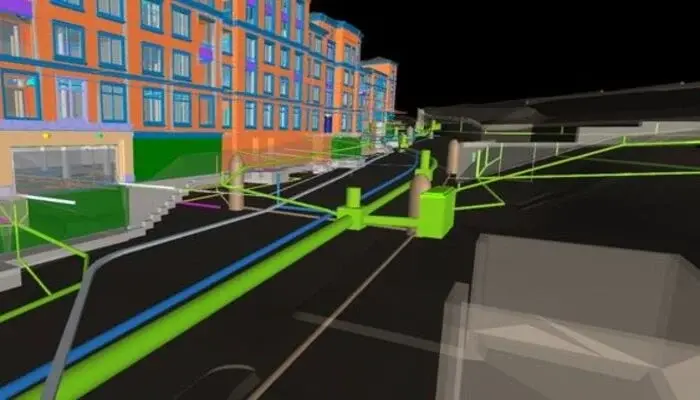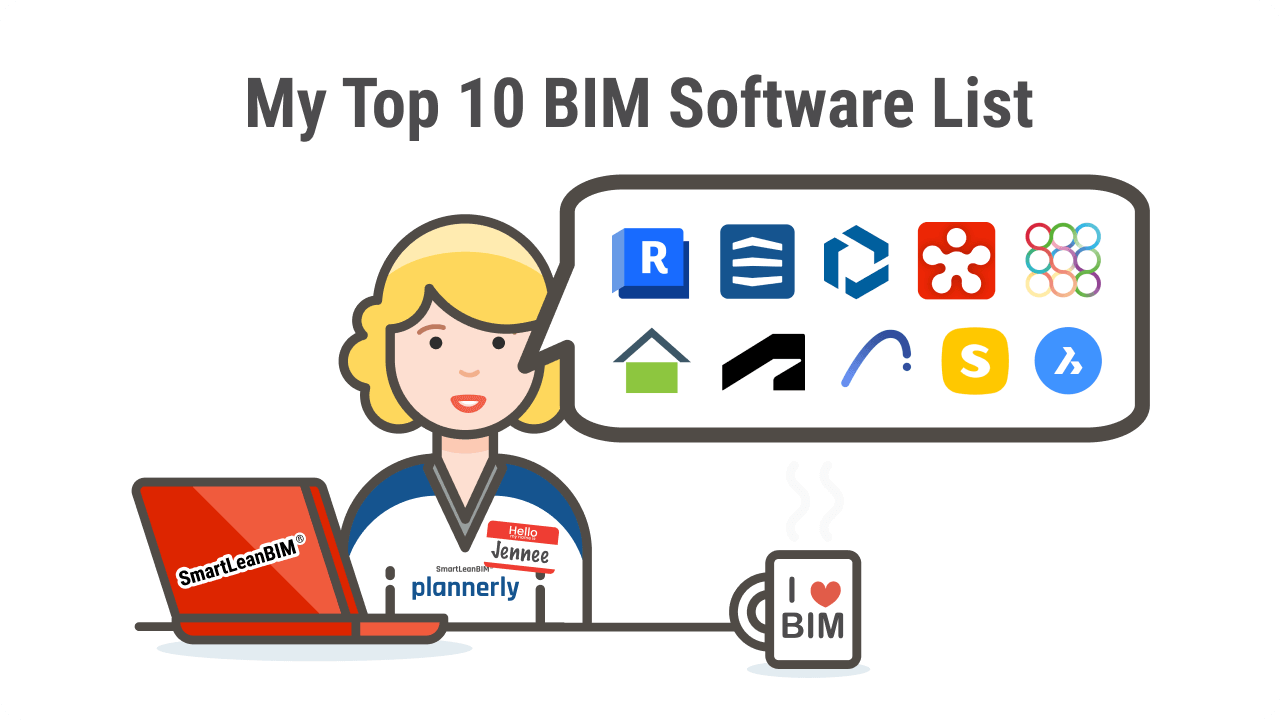
Building Information Modeling (BIM) is leading the construction industry into the future. It’s the most efficient process to date, helping professionals design, manage, and build better. For example, architects can use BIM in transportation engineering can be used to iterate 3D models, civil engineers can use it to check the execution feasibility of a building, and facility managers can use digital twins to ensure long-term maintenance of a structure. So, BIM is not just a tool for time's sake; it is a process that can be plugged in at every stage of the project’s life cycle.
How is BIM Redefining the Future for Transportation Engineering?
Narrowing the lens on BIM in transportation engineering, it enables data-driven infrastructure development. Whether you are building highways, railways, airports, or bridges, BIM allows engineers to simulate real-world performance, optimize designs, and detect clashes before the construction begins. It enhances coordination across disciplines, reduces delays, and supports lifecycle management of a structure. Venturing into the future of work, BIM can help transport engineers create more sustainable, resilient, and cost-effective forms in the built environment.
A 2025 study by Springer Nature highlights that BIM adoption can reduce project timelines by an average of 20% and 15% costs. Additionally, it also decreases design errors by 30%.
5 Applications of BIM in Transportation Engineering

Transport engineering is a subset of civil engineering that focuses on the planning, operation, and maintenance of transportation systems. So, let’s delve into the nitty-gritty of BIM for transportation engineers.
1. Highway and Road Construction
BIM allows for the creation of intelligent 3D models of roads that include topography, utilities, drainage, and traffic analysis data.
2. Bridge and Flyover Construction
The uses of BIM in transportation engineering include building bridges as well. It can integrate structural, geotechnical, and hydraulic data into a 3D model.
3. Railway and Metro Construction
BIM provides a platform for coordinating civil works, tracks, stations, signaling systems, and MEP services.
4. Airport Infrastructure Development
With BIM, airport designers can simulate passenger flow, optimize gate placements, and analyze security operations.
5. Lifecycle Asset Management
Through digital twins, facility managers can access real-time data for inspections, predictive maintenance, and energy performance tracking.
5 Benefits of BIM for Transportation Engineers

1. Improved Coordination
BIM allows engineers to integrate all these segments into a shared 3D environment, making it easier to detect clashes and resolve conflicts before construction begins.
2. Enhanced Design Visualization
The use of BIM in transportation engineering enables the creation of detailed 3D models. It improves transparency, facilitates public engagement, avoids conflicts, and accelerates decision-making.
3. Smart Decision Making
BIM allows data-embedding into every element of the model. Transportation engineers can use this data to conduct traffic analysis, evaluate environmental impacts, and simulate performance under various conditions.
4. Streamlined Construction Processes
With tools like 4D and 5D BIM, professionals can create detailed construction schedules and accurate quantity take-offs. This enhances project sequencing, resource allocation, and budget management, thereby resulting in faster delivery and fewer delays.
5. Lifecycle Asset Management
BIM enables the creation of a digital twin, which is a dynamic 3D model that evolves with the asset. Facility managers and public agencies can use this model for inspections, maintenance planning, and future expansions of the structure.
Integrated BIM Workflows for Transportation Engineers
Transport planning and construction is a layered process. An infrastructure project goes through multiple stages, and stakeholders come to life. Whether it is roads, bridges, or airports, all of them involve a complex mix of terrain, traffic patterns, utilities, and environmental constraints. That’s where integrated BIM workflows come in. Instead of jumping between scattered workflows, engineers can now work within a unified system that connects survey data, design models, and construction plans in real time. This enables them to see the full picture of the project and make decisions with more accurate data at every stage.
Popular BIM Software for Transportation Engineers

Software provides a platform, or a channel, to execute BIM processes. It becomes the medium through which BIM comes to life. So, here are the most-used BIM software for transportation engineers.
1.Civil 3D
Civil 3D is the most popular software for integrating BIM in transportation engineering. It is an Autodesk software that offers tools for corridor modeling, road alignment, grading, and earthwork design. It can integrate with AutoCAD and allow dynamic data updates. This makes it ideal for roadway projects, allowing engineers to quickly adapt designs as conditions or inputs change.
2. OpenRoads Designer
Created by Bentley for modeling transportation infrastructure, OpenRoads Designer is one of the most holistic BIM software programs that offers support for everything from concept evolution to construction documentation. You can do terrain modeling capabilities, drain planning, and corridor design using this comprehensive tool.
3. InfraWorks
InfraWorks enables early-stage conceptual design in a 3D environment. It helps people visualize infrastructure projects in a real-world context. This allows GIS integration, traffic data analysis, and environmental constraint study, making it valuable for stakeholder presentations and feasibility studies in the early planning stages of transport projects.
4. Tekla Structures
While more commonly associated with structural engineering, Tekla is frequently used in transportation projects involving bridges and complex concrete structures. It supports accurate 3D modeling and detailing, making it useful for fabrication-level documentation and coordination on large infrastructure projects.
5. Navisworks
Though not a design tool itself, Navisworks plays a key role in construction coordination. It allows transportation teams to aggregate models from various BIM platforms, perform clash detection, and simulate construction sequencing (4D BIM). It is highly useful during the preconstruction and project reviews for multi-disciplinary infrastructure projects.
Learn Transporation Engineering Softwares With Our Online Courses!
3 Career Opportunities for BIM-Skilled Transportation Engineer
According to the U.S. Bureau of Labor Statistics, BIM jobs for transportation engineers are one of the most highly paid. As per Zippia, individuals skilled in transport engineering are the most in-demand in Denver, Colorado. Such statistics imply that the future of work in this industry is only expected to become more lucrative. Let’s delve into the career paths that one can explore after specializing in BIM for transportation engineering.
1. BIM Transportation Engineer
This hybrid role combines traditional roadway or rail design expertise with BIM tools like Civil 3D or OpenRoads. In this job, you'll create intelligent models, manage alignments, and coordinate across disciplines within a 3D environment.
2. Civil BIM Modeler
Modelers work closely with engineers to turn technical designs into accurate, data-rich 3D models. In transportation, this means working on roads, bridges, tunnels, and drainage systems using large-scale federated models. Read on, how to transition from civil engineer to BIM Modeler!
3. VDC Engineer
Virtual Design and Construction (VDC) engineers apply BIM processes in the field, working closely with contractors to simulate construction, plan logistics, and support decision-making during execution.
Top 3 BIM Courses for Transportation Engineers in the US
Learning BIM can unlock new and well-paying career opportunities for transportation engineers. Here is the list of top courses we recommend.
1. BIM Professional Course for Civil Engineers by Novatr
- Duration: 7 months
- Fee: $ 2,500
This course teaches the fundamentals of BIM and progresses through essential topics like modeling techniques, use of families and components, and working with concrete and steel structures. The syllabus also covers precast elements, reinforcement detailing, scheduling, annotations, documentation, and model presentations.
2. Transportation Course by Engineering Education & Training
- Duration: 50+ hours
- Fee: $950.00- $1,150.00
The program covers topics like project management, traffic engineering, road design, intersection geometry, traffic signals, traffic control, geotechnical and pavement, and drainage. At the end of this course on BIM in transportation engineering, students are offered quizzes and exams to enhance their skills in the niche.
3. Metro Rail Systems and Construction Specialization by L&T EduTech
- Duration: 1 month
- Fee: NA
Offered on Coursera, this course covers subjects such as planning, design, construction methodologies, and systems integration specific to metro rail infrastructure. Drawing from L&T’s real-world expertise in large-scale transit projects, the curriculum emphasizes practical applications, safety standards, and engineering best practices in urban rail systems.
In Conclusion
Emerging technologies like GIS integration, digital twins, and AI-powered predictive analytics will further enhance BIM’s role in transportation engineering. With governments increasingly mandating BIM for public infrastructure, its adoption will not just be a choice but a necessity for resilient, efficient, and future-ready mobility networks.
We suggest you explore the BIM Professional Course for Civil Engineers by Novatr. It is one of the most comprehensive programs that offers insights about 12+ BIM tools with workflows. This allows participants to develop a versatile skill set and learn through theory and practical lectures. Learners get to apply their knowledge on capstone projects and receive personal feedback from the course mentors. Novatr also gives placement assistance to students to help them secure a job in construction firms specializing in BIM for transportation engineering.
Explore the course today!
Visit our Resources Page to learn about the latest construction trends and ideas.
Was this content helpful to you











